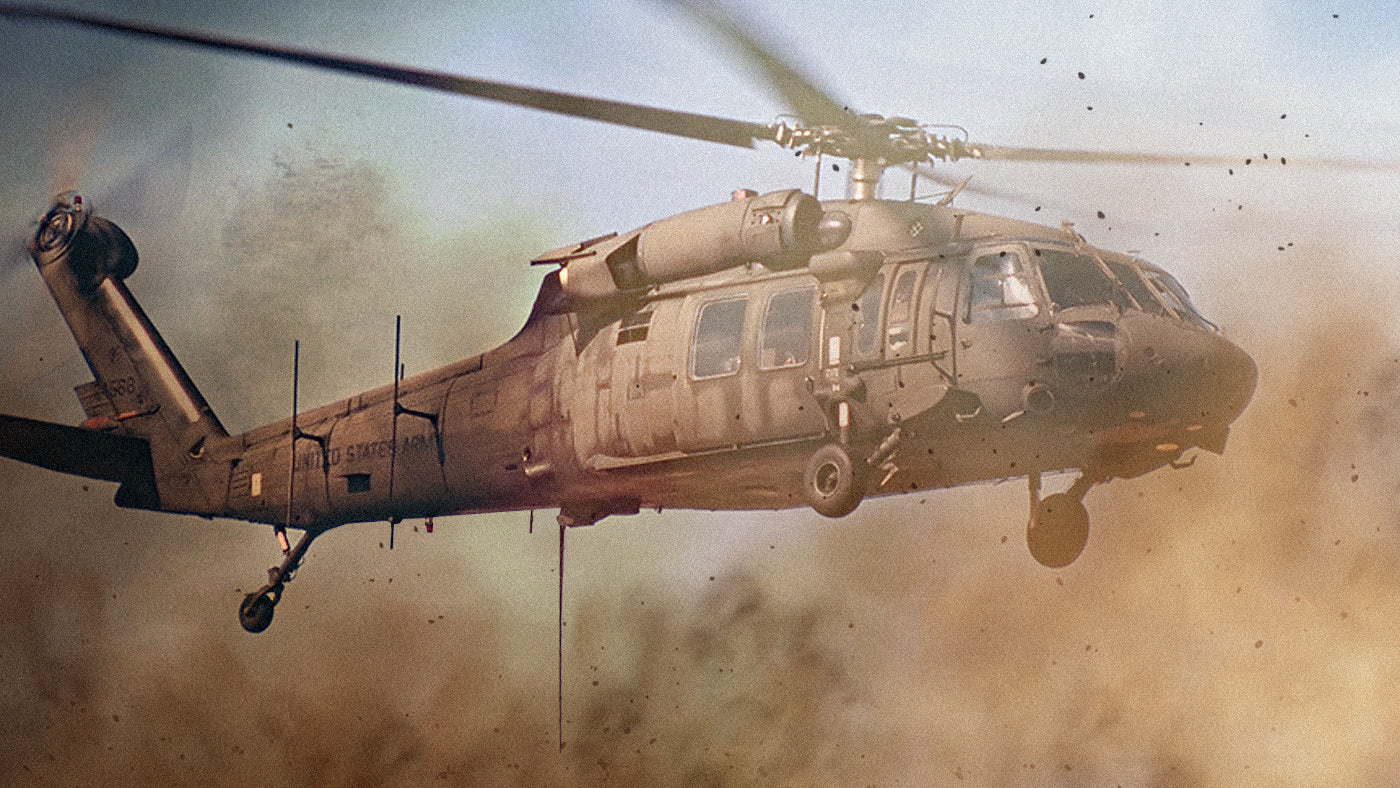UH-60 Helicopter: Just How It Compares to Other Armed Force Airplane
UH-60 Helicopter: Just How It Compares to Other Armed Force Airplane
Blog Article
Explore the Globe of UH 60 Helicopter: Understanding Its Benefits and Key Parts
The UH-60 helicopter, frequently recognized as the Black Hawk, stands as a stalwart in army aeronautics, prized for its adaptability and integrity in a wide range of operational scenarios. From its beginning to its present versions, the advancement of the UH-60 showcases innovations that have actually moved it to the center of aerial operations.

Advancement of UH-60 Helicopter
The development of the UH-60 helicopter showcases significant innovations in rotorcraft innovation and functional capabilities. Originally designed in the 1970s by Sikorsky Aircraft, the UH-60 Black Hawk has undertaken several upgrades to fulfill the changing demands of modern-day war and emergency situation response missions. One of one of the most noteworthy innovations in the evolution of the UH-60 is the consolidation of sophisticated avionics systems, such as electronic cabins, GPS navigating, and interaction systems, enhancing situational awareness and objective effectiveness.
Moreover, improvements in engine technology have boosted the UH-60's power and performance, allowing it to run in high-altitude settings and severe climate problems more efficiently. The introduction of composite materials in the airframe has decreased the helicopter's weight while enhancing its sturdiness and resistance to fatigue, resulting in improved total efficiency and durability.

Benefits in Armed Force Workflow
In army procedures, the UH-60 helicopter offers critical advantages that improve objective performance and operational success. One key benefit of the UH-60 helicopter is its versatility. It can do a vast array of objectives, consisting of troop transport, air assault, clinical discharge, and electronic warfare. This multifunctionality permits military leaders to adapt swiftly to transforming battleground problems and satisfy different operational demands with a single airplane system.
Furthermore, the UH-60's durable design and advanced technology contribute to its dependability in requiring combat atmospheres. Its twin-engine setup supplies redundancy, boosting safety and security and survivability throughout goals (uh 60 helicopter). Additionally, the helicopter's sophisticated avionics and communication systems make it possible for smooth sychronisation with ground forces, improving situational recognition and goal execution
Additionally, the UH-60's ability to run in diverse terrains and environments, including warm and high-altitude settings, gives army pressures the flexibility to conduct procedures in difficult settings. This capacity is specifically vital for unique operations and quick implementation scenarios where dexterity and speed are extremely important. Generally, the UH-60 helicopter's benefits make it a useful property in armed forces procedures, supporting goal success and army security.
Trick Components and Equipment
Exemplifying precision and refinement, the UH-60 helicopter integrates an intricate variety of key parts and systems vital for its optimum performance in varied operational situations. At the heart of the UH-60's functionality is its rotor system, consisting of a primary blades and a tail blades. uh 60 helicopter. The main rotor offers lift and thrust, allowing the helicopter to ascend, Source descend, and maneuver horizontally. Concurrently, the tail blades neutralizes the torque produced by the primary rotor, making certain security throughout flight. One more important element is the transmission system, in charge of moving power from the engines to the blades effectively. The engines, generally two turboshaft engines, provide the necessary power to drive the helicopter. Additionally, the UH-60 is furnished with innovative avionics systems for navigation, communication, and mission-specific tools combination. These systems enhance situational recognition, interaction abilities, and mission performance. The combination of these key parts and systems underscores the UH-60 helicopter's reputation as a flexible and reputable airplane in military and private procedures.
Function in Look and Rescue Goals
Throughout crucial objectives calling for swift and accurate aerial support, the UH-60 helicopter plays a crucial role in search and rescue procedures. Outfitted with advanced innovation and abilities, the UH-60 helicopter can swiftly get to remote or hard-to-access locations to help in search and rescue initiatives. Its agility and versatility enable it to browse varied terrains, from mountainous regions to city settings, making it a beneficial possession in situating and removing individuals in distress.
The UH-60's roomy cabin suits clinical workers and required devices, facilitating the fast evacuation of hurt or stuck individuals. Its capacity to operate in various climate conditions additionally enhances its performance in search and rescue objectives, making certain continuity of procedures even in negative situations. Furthermore, the helicopter's endurance and range allow continual search initiatives over extended periods, raising the possibility of efficiently locating visit this website and fetching missing out on persons.

Influence in Disaster Alleviation Operations
Playing a vital duty in reducing the after-effects of natural catastrophes, the UH-60 helicopter's operational efficiency proves important in disaster alleviation operations. The UH-60's versatility enables it to access hard-to-reach locations swiftly, supplying supplies, rescuing stuck people, and offering clinical evacuation services following calamities. Its capacity to carry heavy tons and suit cots makes it essential in relocating essential sources and damaged individuals efficiently.

In Addition, the UH-60's innovative technology, including night vision capabilities and all-weather operability, enables it to conduct objectives in difficult problems, making certain that alleviation initiatives can continue around the clock. The helicopter's rate and agility even more enhance its effectiveness in navigating disaster-stricken areas and reaching remote areas where typical lorries might have a hard time to access.
In calamity alleviation operations, time is typically important, and the UH-60's swift deployment and quick action times can imply the distinction in between life and fatality. By offering vital support and helping with crucial operations, the UH-60 helicopter considerably adds to reducing suffering and restoring stability in the aftermath of tragedies.
Conclusion
Finally, the UH-60 helicopter has evolved gradually to become a critical asset in army operations, search and rescue missions, and catastrophe alleviation efforts. Its crucial parts and systems contribute to its efficiency and integrity in various circumstances. With its advanced abilities and versatile nature, the UH-60 helicopter plays a considerable role in improving functional capabilities and conserving lives in critical circumstances.
Report this page